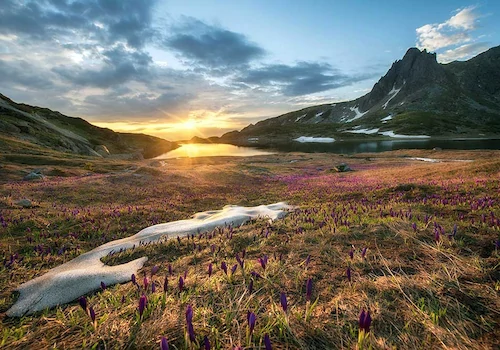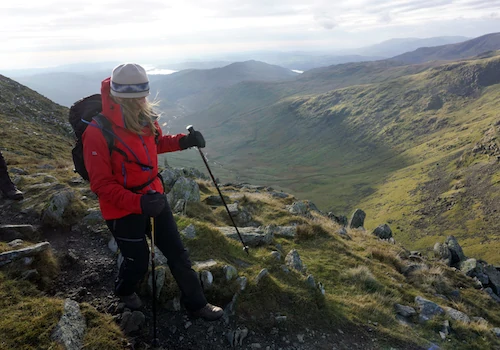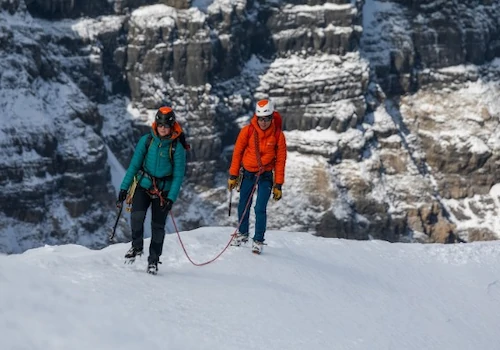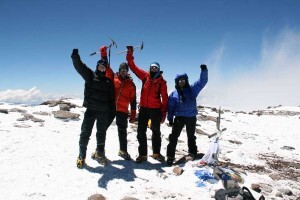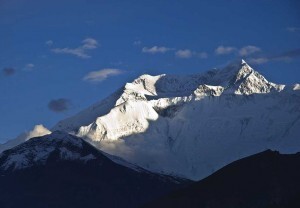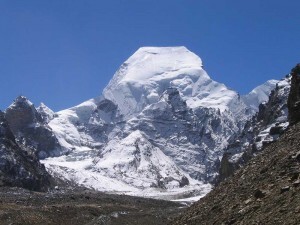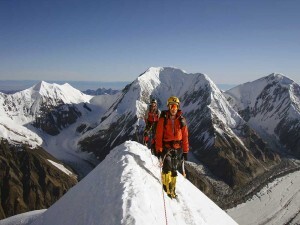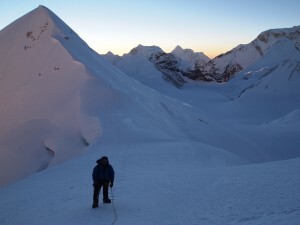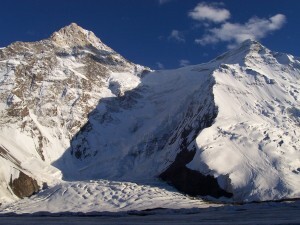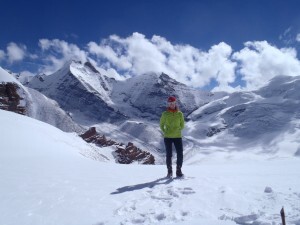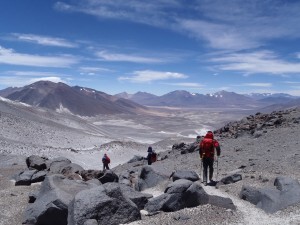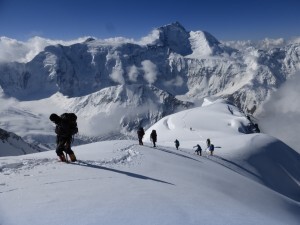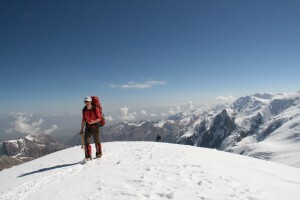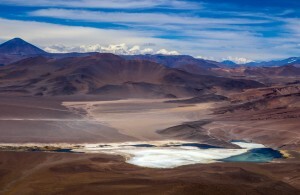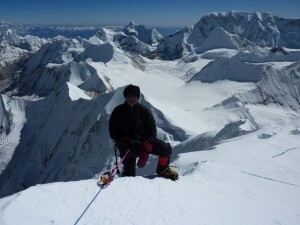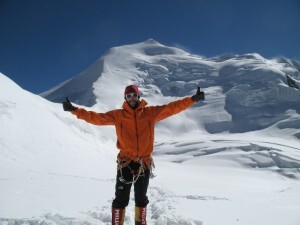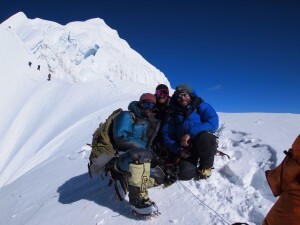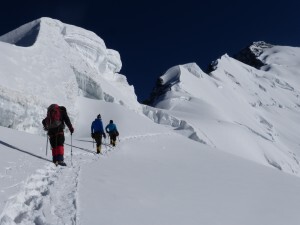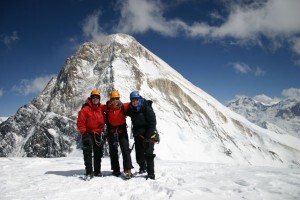
- Expeditions
By Region
By Month
By Grade
By Height
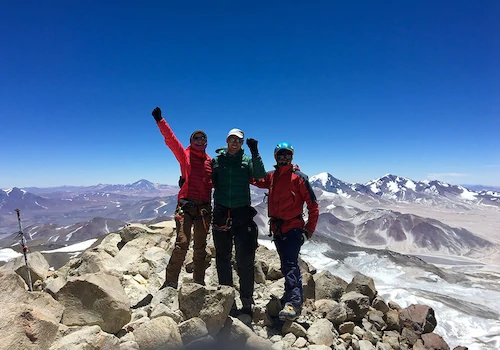
- Treks
- UK & Alpine
- Schools
- Hire
- News
- Shop
Choosing a 7000m Peak
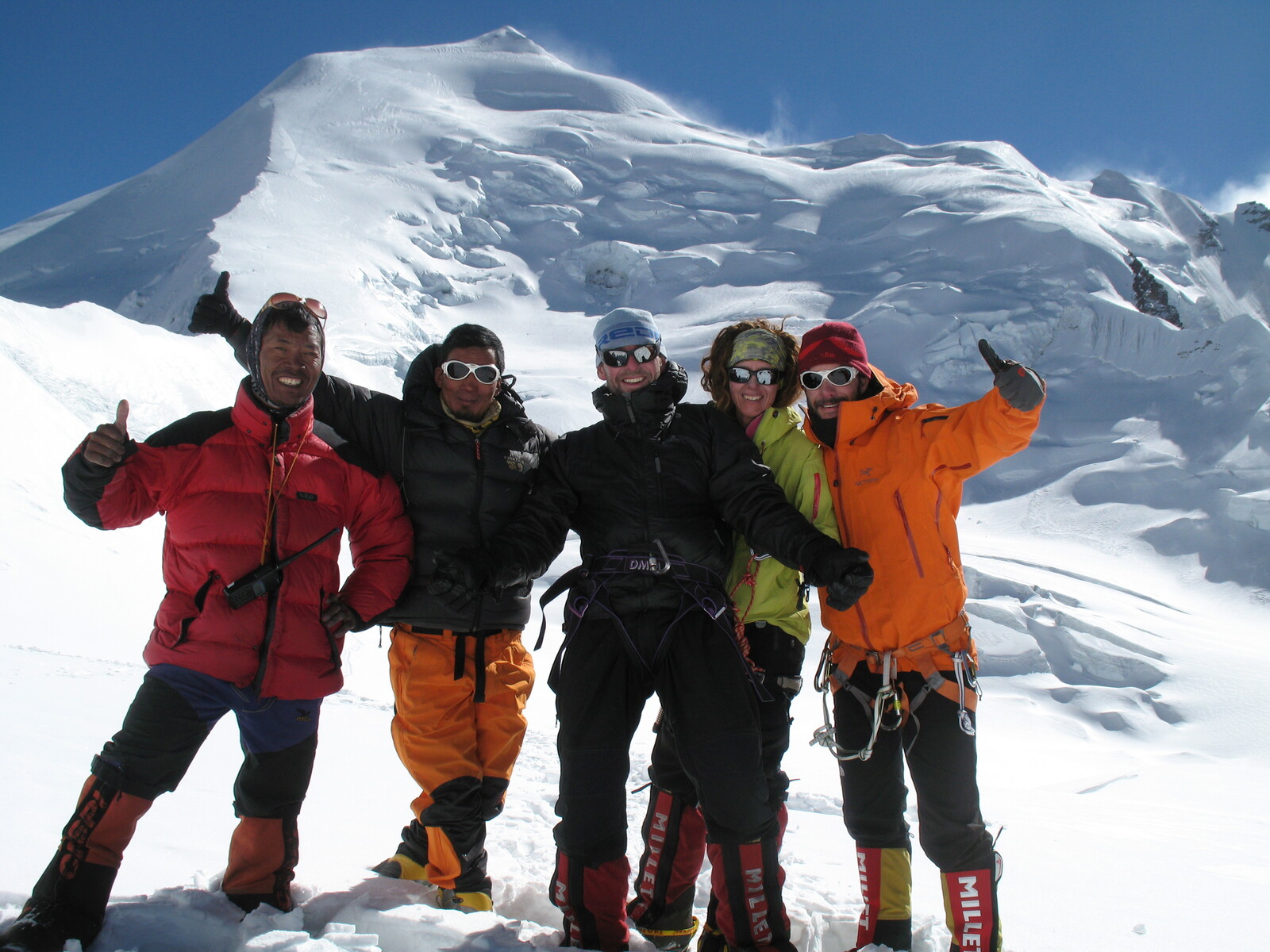
For many people, choosing to climb a 7000m peak is the next big step up, so how do you make sure you choose the right one?
Like all mountains, 7000m peaks come in many different formats, shapes and sizes, and the decision as to which one to climb will be based on several criteria.
Some people choose a peak in a certain country or region because they want to vary their experience or explore somewhere new, others due to the technical challenge or the chance of success. It may be the dates of the climbing season that work best, the weather in the region, or simply the price for a particular trip. For some, what draws them is the sheer beauty of the peak!
What constitutes an easy peak?
A technically ‘easy’ peak does not always mean you will have the best chance of success on the mountain, because ‘easy’ won’t necessarily mean the same thing to everyone, and this is often misunderstood. Just because a peak is technically straightforward, it doesn’t mean it is ‘easy’, or that YOU will be able to climb it without any difficulty. We also need to consider the length of the climbing days, the amount of height gain between each camp, the number of camps and the weather that we are likely to encounter… could any of these factors make it more difficult for YOU?
If you already have the appropriate technical skills, then the greatest factor is often the length of the summit day, and the weather will of course be a factor controlling whether you will have the opportunity to make a summit attempt.
How do they rate?
We’ve put together a comparison of 7000m peak expeditions to help.
Choosing a 7000m Peak | |||||||||||
|---|---|---|---|---|---|---|---|---|---|---|---|
| Peak | Height (m) | Days (land only) | Best Months | Camps Above BC | Summit Day | Mountain Skill Level | Weather/ snow conditions | Total | Level of discomfort | Total including discomfort | Cost* |
| Ojos del Salado* | 6893 | 16 | Dec-Jan | 1 | 6+3 | 1 | 1.5 | 11.5 | 1 | 12.5 | £2950 |
| Lhakpa Ri & North Col | 7045 | 30 | Apr-Jun | 1 | 6+3 | 2 | 1 | 12 | 1 | 13 | £10,750 |
| Aconcagua* | 6962 | 23 | Nov-Jan | 3 | 6+3 | 1.5 | 3 | 13.5 | 2 | 15.5 | £3950 |
| Korzhenevskaya | 7105 | 25 | Jul-Aug | 3 | 7+3 | 2 | 2 | 14 | 2.5 | 16.5 | £3950 |
| Baruntse | 7129 | 34 | Oct-Nov | 2 | 7+3 | 3 | 2 | 15 | 2 | 17 | £6650 |
| Muztagh Ata | 7546 | 30 | Jul-Aug | 4 | 7+3 | 2 | 2 | 14 | 3 | 17 | £4495 |
| Putha Hiunchuli | 7246 | 34 | Apr-Jun Oct-Nov | 3 | 8+4 | 2 | 2 | 16 | 3 | 17 | £6995 |
| Satopanth | 7075 | 29 | Sep-Oct | 3 | 7+3 | 3 | 2 | 15 | 2.5 | 17.5 | £5595 |
| Himlung Himal | 7126 | 28 | Apr-Jun Oct-Nov | 3 | 7+4 | 2.5 | 2 | 15.5 | 3 | 18.5 | £6495 |
| Peak Lenin | 7134 | 25 | Jun-Aug | 3 | 8+5 | 1.5 | 2.5 | 17 | 3 | 19 | £3695 |
| Kun | 7077 | 28 | Apr-Jun Oct-Nov | 3 | 7+4 | 3 | 2 | 16 | 3 | 19 | £4995 |
| Annapurna IV | 7525 | 30 | Apr-Jun Oct-Nov | 3 | 7+4 | 3 | 2 | 16 | 3 | 19 | £6750 |
| Ismoil Somoni | 7495 | 25 | Jul-Aug | 4 | 7+4 | 4 | 2 | 17 | 3.5 | 20.5 | £3950 |
| Pumori | 7161 | 30 | Oct-Nov | 3 | 7+3 | 4 | 3 | 17 | 3 | 20 | £6050 |
| Khan Tengri | 7010 | 25 | Jul-Aug | 3 | 8+5 | 4 | 3 | 20 | 3.5 | 23.5 | £4350 |
| Peak Pobeda | 7439 | 30 | Jul-Aug | 5 | 8+5 | 5 | 4 | 22 | 5 | 27 | £4850 |
KEY
Camps above BC: number of camps above base camp to the summit.
Summit Day: number of hours up to the summit and down from the summit.
Mountain skill level: measured from 1-5 where 1 is the easiest and 5 is the hardest.
Weather/snow conditions: measured from 1-5 where 1 is the best and 5 is the worst.
Total: Adding together the length of summit day, mountain skill level and weather/snow conditions.
Level of discomfort: measured on a scale of 1-5, with 5 being the least comfortable.
Cost: Excluding international flights (land only), prices correct at the time of writing*.
- Aconcagua
- Lhakpa Ri
- Annapurna IV
- Himlung Himal
- Satopanth
- Ojos del Salado
- Khan Tengri
- Peak Lenin
Are you ready for a 7000m peak?
If you are looking for the easiest summit, ask yourself, are you really ready?
When embarking on a 7000m peak, it is crucial that you have some spare capacity to deal with the altitude, harsh conditions and the mental strength that mountaineering demands. Many people just focus on fitness, asking, Am I fit enough? or, How fit do I have to be? However, fitness is just one aspect of what is required. Personal organisation, cold weather camping skills, mountain skills, and knowing how to care for yourself in tough conditions all play an equal part. If you can’t cope with these elements of an expedition, then your fitness alone won’t get you to the top, and it could get you into trouble.
Personal organisation:
This involves knowing your gear and exactly where it is in your pack, layering, glove systems, getting ready in sub-zero conditions, being on time and being ready to accept the unexpected. On paper all this appears so simple, but fumbling with gloves in a sub-zero blizzard can result in frost bitten fingers very quickly. Overheating due to poor layering can result in dehydration, which can lead to altitude sickness. Being late can anger your teammates who are outside freezing and politely cursing as they wait for you! Needless to say, each team member must be well-organised to have a chance of success on a 7000m peak.
The discomfort level of cold weather camping:
Part of life on expeditions to the higher peaks entails helping to erect tents, moving stones and digging snow platforms, melting snow, boiling water and eating freeze-dried food. Getting up in the morning in sub-zero temperatures, lighting a stove to boil water and forcing down freeze-dried food can all add to either the ‘enjoyment’ or the ‘downfall’ of your expedition. It takes a tremendous amount of effort to boil water from snow but this is the only way to make food and drink, which of course is essential if you are going to be strong for your summit bid. It shouldn’t come as a surprise that many inexperienced people don’t want to get out of their tents on summit day! In summary, don’t let this be you! Be prepared, go get experience, or better still – join one of our preparation courses:
Scottish Winter Expedition Skills courses from January to March each year
Alpine Expedition Training courses in Bolivia, Tien Shan, Nepal or Ecuador, taking you up to 6000m
Alpine Training Courses in Chamonix and Arolla each summer
Mountain skills:
Fundamental skills include the use of an ice axe, crampons, roped travel, crevasses, abseil/rappel techniques, fixed lines and dealing with the cold. Carrying a weighted rucksack of just 14kg can, after 8 hours, weigh so heavy on your thigh muscles and be so crippling to weak knees, that you will need to use your trekking poles – however strong you may feel. It is essential to learn to use trekking poles properly for maximum support.
If you expect your leader to put all tents up on your behalf, then you’ll have to wait a long time and you will freeze with your inactivity! It may be tough work, but with the exception of expeditions in Nepal, it is expected that everyone will help.
Walking roped together on a glacier is lifesaving, but for those who have never been roped up it can appear awkward; there is an art to not stepping on the rope, tripping, or being pulled over. You must also be able to walk and climb on crampons – think: can you free wheel and move without thinking about each foot placement? What happens if you slip or loose your footing; do you know how to stop yourself flying down into oblivion, or at very least, onto the nearest rocks that could break your leg! Can you avoid stabbing your leg with each foot movement?
Have you ever descended a rope, not vertically but on a steep slope; do you have the confidence to lean back and take control? The more control you have, the quicker you will get down.
If you like the sound of a 7000m peak, we recognise that it is a big commitment to sign up to the expedition, in terms of time, financial and physical demands. We believe if you get it right, coming with the appropriate skills and experience, you will enjoy the challenge of your chosen 7000m peak.
After all, more often than not, the harsher the environment and the tougher the hardship faced, the greater the satisfaction and fulfillment on achieving the goal.
- Baruntse
- Khan Tengri
- Satopanth
- Aconcagua
- Korzhenevskaya
- Peak Lenin
- Ojos del Salado
- Baruntse
How do I gain the skills for a 7000m peak?
Learning skills at altitude can be exceptionally difficult and there are no guarantees that you will have the energy required or be feeling good enough to learn what’s needed, or that you will be able to put in the effort due to altitude or ailments.
Expeditions are predominately about climbing a peak, with only a little time given to recap on skills. Meanwhile the purpose of courses is to instruct and teach the skills required, in readiness for climbing your chosen peak and these are held at the comfort of a lower altitude.
Arriving on expedition with the appropriate skills will give you, your teammates and the expedition leader the confidence needed to help push you on to the summit. If you are out of your depth please expect to be left in camp; your challenge may be the altitude but should NOT be your technical skill.
IF IN DOUBT, GAIN EXPERIENCE AT A LOWER ALTITUDE, LESS TECHNICAL FIRST!
Training Courses
Scottish Winter Mountaineering and Snow and Ice Climbing courses are perfect to skill up (not just a way for expedition companies to make more money). They teach essential skills to prepare you for your chosen expedition, which in turn can save you wasting your money, and being left sat in your tent shattered and out of your depth.
Alpine Training Courses really increase your skills, experiencing crevasses and getting you used to night climbs and early starts.
Finally (phew!), before embarking on a 7000m peak, you should also have climbed close to, or above, 6000m in the past, so check out some of the below:
- 6000m Peaks
- Pre-expedition training and advice weekends in Scotland or the Lake District are included, as standard, and we encourage clients to take advantage of these
- See our article on choosing boots for 7000m Peaks
Having read all of this, are you REALLY prepared to embark on your first 7000m peak?
Come and see us in Ambleside or call us on 015394 33794 to talk through the options for you.
- Himlung Himal
- Baruntse
- Korzhenevskaya
- Khan Tengri

About Dave Pritt
Dave Pritt is the Director of Adventure Peaks. With over 30 years of mountaineering feats, he is a very experienced high altitude mountaineer who has led expeditions to K2, Broad Peak and five Everest expeditions. Dave has completed the 7 summits, led an expedition to Ski the South Pole Last Degree, Satopanth in India and in 2007 he guided Ian McKeever to break the world record for the seven summits in 156 days. He is lucky enough to have climbed on the majority of our advertised peaks, but the Tien Shan remains his favourite destination.

